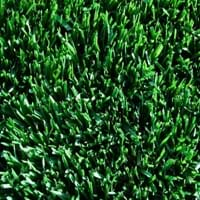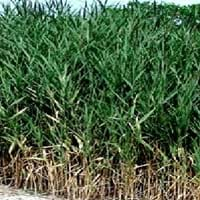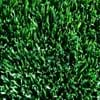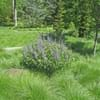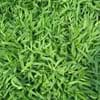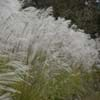Life Span
Perennial
Perennial
Origin
World/Pandemic, North America, Europe
Southern Europe
Types
Alene, Barblue, Caliber, Canterbury
Arundo, Carrizo
Habitat
Cultivated Beds, Lawn, meadows
Saline Soils, Sandy areas
USDA Hardiness Zone
3-10
6-10
AHS Heat Zone
8 - 1
12 - 1
Sunset Zone
A1, A2, A3, 1a, 1b, 2a, 2b, 3a, 3b, 4, 5, 6, 7, 8, 9, 10, 11, 14, 15, 16, 17, 18, 19, 20, 21, 22, 23, 24
3a, 3b, 4, 5, 6, 7, 8, 9, 10, 11, 12, 13, 14, 15, 16, 17, 18, 19, 20, 21, 22, 23, 24
Habit
Mat-forming
Upright/Erect
Minimum Width
Not Available
Flower Color
Purplish Green
Not Available
Flower Color Modifier
Bicolor
Bicolor
Fruit Color
Not Available
Not Available
Leaf Color in Spring
Green, Blue Green, Gray Green
Green, Gray Green
Leaf Color in Summer
Light Green
Light Green
Leaf Color in Fall
Green, Blue Green, Gray Green
Green, Gray Green
Leaf Color in Winter
Green, Blue Green
Green, Gray Green
Leaf Shape
Narrowly linear
Linear
Plant Season
Spring, Summer, Fall
Spring, Summer, Fall, Winter
Sunlight
Full Sun, Partial Sun, Partial shade
Full Sun
Growth Rate
Fast
Very Fast
Type of Soil
Clay, Loam
Clay, Loam, Sand
The pH of Soil
Acidic, Neutral
Acidic, Neutral, Alkaline
Soil Drainage
Well drained
Average
Bloom Time
Summer
Late Summer, Early Fall, Fall, Late Fall
Tolerances
Not Available
Wet Site, Drought, Salt
Where to Plant?
Ground
Ground
How to Plant?
Seedlings, Sod
From Rhizomes, Stem Planting
Plant Maintenance
Medium
Medium
Watering Requirements
Water frequently while growing
Requires a lot of watering
In Summer
Lots of watering
Lots of watering
In Spring
Moderate
Moderate
In Winter
Average Water
Average Water
Soil pH
Acidic, Neutral
Acidic, Neutral, Alkaline
Soil Type
Clay, Loam
Clay, Loam, Sand
Soil Drainage Capacity
Well drained
Average
Sun Exposure
Full Sun, Partial Sun, Partial shade
Full Sun
Pruning
Remove damaged leaves, Remove dead branches, Remove dead leaves
Do not prune during shooting season, Prune after harvesting, Remove damaged leaves, Remove dead branches, Remove dead leaves
Fertilizers
Nitrogen
All-Purpose Liquid Fertilizer, Fertilize in early spring
Pests and Diseases
Dollar spot, Rust, Summer Patch
Not Available
Plant Tolerance
Drought
Drought
Flowers
Insignificant
Showy
Flower Petal Number
Single
Single
Foliage Texture
Fine
Bold
Foliage Sheen
Matte
Matte
Invasive
Sometimes
Sometimes
Attracts
Insects
Bees, Birds, Hummingbirds
Allergy
Cough, Itchy eyes, Runny nose
allergic conjunctivitis, flushing of face, wheezing
Aesthetic Uses
Ground Cover
Beautification, Bonsai
Beauty Benefits
Not Available
Making cosmetics, Skin cleanser
Environmental Uses
Erosion control
Agroforestry, Air purification, Nesting sites for birds, No fertilizer, pesticides, or herbicides needed, Prevent Soil Erosion, Shadow Tree, soil stabilisation
Medicinal Uses
Not Available
Diaphoretic, Diuretic, Emmoiliant
Part of Plant Used
Leaves
Bark, Sap
Other Uses
Used in lawns and turf
Basketary, Showy Purposes, Used in making musical instruments, Wood is used in construction
Used As Indoor Plant
No
Sometimes
Used As Outdoor Plant
Yes
Yes
Garden Design
Lawns and Turf
Container, Cutflower, Dried Flower/Everlasting, Feature Plant, Mixed Border, Screening / Wind Break, Tropical, Water Gardens
Botanical Name
POA pratensis
ARUNDO donax
Common Name
Kentucky Bluegrass
Giant Reed
In Hindi
Kentucky Bluegrass
नरकट
In German
Kentucky Bluegrass
Pfahlrohr
In French
Kentucky Bluegrass
Arundo donax
In Spanish
Pasto azul de Kentucky
Arundo donax
In Greek
Κεντάκυ Bluegrass
Arundo donax
In Portuguese
Kentucky Bluegrass
Cana-do-reino
In Polish
Wiechlina
Lasecznica trzcinowata
In Latin
Kentucky Bluegrass
Arundo donax
Phylum
Magnoliophyta
Angiosperms
Class
Liliopsida
Liliopsida
Order
Cyperales
Cyperales
Clade
Angiosperms, Commelinids, Monocots
Commelinids
Tribe
Poeae
Not Available
Subfamily
Pooideae
Not Available
Number of Species
Not Available
Season and Care of Kentucky Bluegrass and Giant Reed
Season and care of Kentucky Bluegrass and Giant Reed is important to know. While considering everything about Kentucky Bluegrass and Giant Reed Care, growing season is an essential factor. Kentucky Bluegrass season is Spring, Summer and Fall and Giant Reed season is Spring, Summer and Fall. The type of soil for Kentucky Bluegrass is Clay, Loam and for Giant Reed is Clay, Loam, Sand while the PH of soil for Kentucky Bluegrass is Acidic, Neutral and for Giant Reed is Acidic, Neutral, Alkaline.
Kentucky Bluegrass and Giant Reed Physical Information
Kentucky Bluegrass and Giant Reed physical information is very important for comparison. Kentucky Bluegrass height is 30.00 cm and width Not Available whereas Giant Reed height is 18.00 cm and width 150.00 cm. The color specification of Kentucky Bluegrass and Giant Reed are as follows:
Kentucky Bluegrass flower color: Purplish Green
Kentucky Bluegrass leaf color: Green, Blue Green and Gray Green
Giant Reed flower color: Not Available
- Giant Reed leaf color: Green and Gray Green
Care of Kentucky Bluegrass and Giant Reed
Care of Kentucky Bluegrass and Giant Reed include pruning, fertilizers, watering etc. Kentucky Bluegrass pruning is done Remove damaged leaves, Remove dead branches and Remove dead leaves and Giant Reed pruning is done Do not prune during shooting season, Prune after harvesting, Remove damaged leaves, Remove dead branches and Remove dead leaves. In summer Kentucky Bluegrass needs Lots of watering and in winter, it needs Average Water. Whereas, in summer Giant Reed needs Lots of watering and in winter, it needs Average Water.
